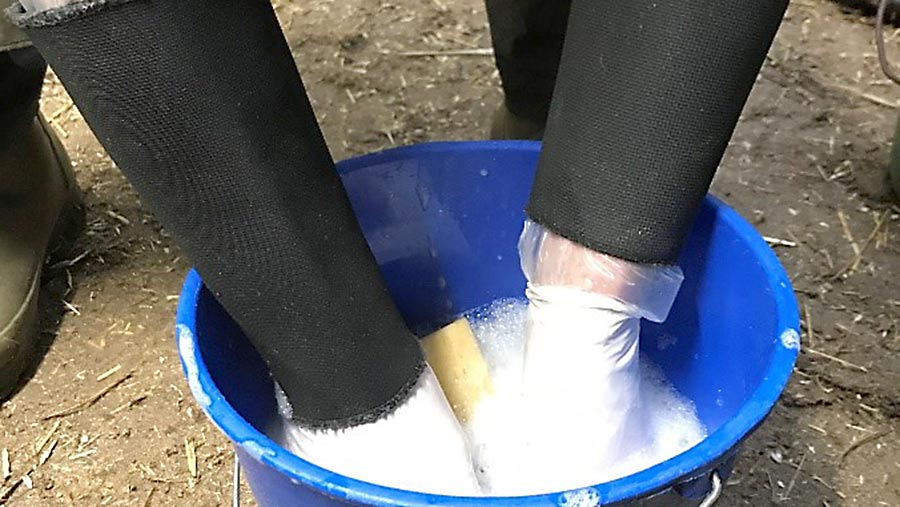How to disinfect foot trimming knives to reduce digital dermatitis

Taking the time to clean and disinfect hoof knives between feet makes sense considering hoof knives have been identified as carriers of digital dermatitis treponemes.
This is the belief of vet Roger Blowey, who first found these digital dermatitis (DD)-causing bugs on 97% of cattle hoof knives in a farm study carried out with Liverpool University in 2014.
They were less easy to identify in slurry. These findings complement other work carried out in the US, UK, Denmark and New Zealand, which identified undisinfected hoof knives as a possible risk factor forDD transmission.
See also: How to help prevent lameness with foot trimming technique
Although it isn’t clear if the level of contamination on knives is high enough to infect animals, Mr Blowey says the findings suggest disinfection is the right route to take – particularly considering the fact DD accounts for more than 30% of all lameness in the UK.
“We know from lab studies that digital dermatitis treponemes remain alive on knives for two hours , so they must represent a potential route of transmission from cow to cow.
And it’s possibly why we’ve seen so many digital dermatitis treponemes in non-healing lesions like toe necrosis as we’re inoculating digital dermatitis into the corium of the hoof by using knives,” he says.
“My own view is that if it’s a possible route of transmission, surely to goodness we should be taking precautions between trimming cows and even between feet.”
Mr Blowey has been working with Amy Gillespie at Liverpool University, in an AHDB Dairy-funded study, to establish the best technique for hoof knife disinfection.
Their preliminary study in 2018 found that cleaning and disinfecting hoof knives after trimming cows with M4 (late chronic) and M2 (acute active ulceration) DD lesions resulted in a significant reduction in DD treponemes on these knives.
Further field studies are planned. Three Defra-approved disinfectants were used, with a similar reduction seen with each one (see panel).
Such disinfection techniques should go hand in hand with general DD control strategies such as regular foot-bathing and slurry management.
With DD treponemes also being found in some healthy feet, it’s important to disinfect knives when trimming every cow, and not just cows showing signs of DD.
Below, Mr Blowey advises how to disinfect knives correctly.
Hoof knife disinfection
What you will need:
- Gloves – should be worn at all times when trimming
- A bucket of soapy water (preferably warm)
- Container for disinfectant – this should hold four hoof knives to enable a pair of knives to be disinfecting, while you use the other two
- Disinfectant – use either 2% Virkon, 2% sodium hypochlorite or 1% FARM30. The key is using a Defra-approved disinfectant at the advised concentration
Step-by-step guide: knife disinfection protocol:
- Make sure knives are free from dirt and faecal matter. Fill a container with your chosen, suitable disinfectant and submerge the blades for at least 20 seconds.
- After trimming each foot, clean your hands and knives in the bucket of soapy water to remove visible dirt.
- Dry knives with a paper towel. This will also help remove dirt.
- Return the knives to the disinfectant for at least 20 seconds before the next use.
- To minimise disruption to workflow, alternate between the two pairs of knives.
AHDB Dairy and Liverpool University have produced a guide to knife disinfection. Search and download the PDF online.
